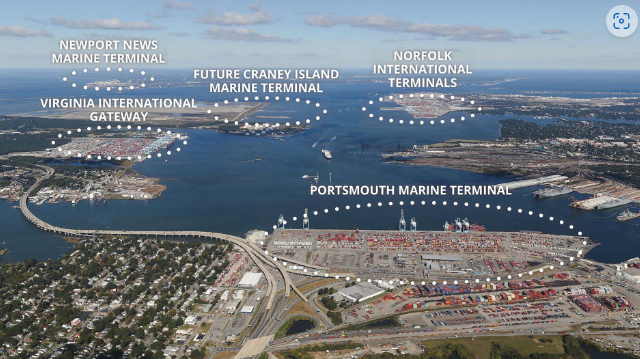Saw this on tv the other night...
-
Wonder if it will work?
https://greekreporter.com/2024/09/29/mexico-compete-panama-canal-new-interoceanic-railway/
-
Cool beans. I imagine the logistics/infrastructure at each end for loading and offloading would be challenging.
, it is unclear whether the Interoceanic Corridor will be faster than the Panama Canal, as it takes time to pack and unpack ships and trains. Moreover, trains cannot carry as much as shipping vessels, reducing the amount of cargo that could be transported by railway.
"Most large shipping vessels today, especially those operating on major international routes, tend to carry between 10,000 and 20,000 containers."
"To estimate how many railcars would be needed to move 15,000 containers, we need to consider the type of containers and how they are typically transported by rail.
Standard railcars (well cars or intermodal flatcars) are designed to carry containers. These cars usually carry either:
- One 40-foot container or
- Two 20-foot containers (since a 20-foot container is half the length of a 40-foot container)
Assuming a mix of container sizes, here's a rough estimate:
- If all 15,000 containers were 40-foot containers, you would need 15,000 railcars (since each car carries one 40-foot container).
- If the containers were all 20-foot containers, you'd need 7,500 railcars (since each railcar can carry two 20-foot containers).
For a mixed load (assuming a 50/50 split of 20-foot and 40-foot containers), you'd need around 10,000 railcars to move 15,000 containers.
In practice, railroads often use double-stacked containers, meaning two containers can be placed vertically on a single railcar. This would effectively cut the required number of railcars in half for 40-foot containers. Thus, for double-stacking:
- 7,500 railcars would be needed if the containers are mostly 40-foot units and can be double-stacked.
These numbers can vary based on railcar configurations and the types of containers being transported.
-
Cool beans. I imagine the logistics/infrastructure at each end for loading and offloading would be challenging.
, it is unclear whether the Interoceanic Corridor will be faster than the Panama Canal, as it takes time to pack and unpack ships and trains. Moreover, trains cannot carry as much as shipping vessels, reducing the amount of cargo that could be transported by railway.
"Most large shipping vessels today, especially those operating on major international routes, tend to carry between 10,000 and 20,000 containers."
"To estimate how many railcars would be needed to move 15,000 containers, we need to consider the type of containers and how they are typically transported by rail.
Standard railcars (well cars or intermodal flatcars) are designed to carry containers. These cars usually carry either:
- One 40-foot container or
- Two 20-foot containers (since a 20-foot container is half the length of a 40-foot container)
Assuming a mix of container sizes, here's a rough estimate:
- If all 15,000 containers were 40-foot containers, you would need 15,000 railcars (since each car carries one 40-foot container).
- If the containers were all 20-foot containers, you'd need 7,500 railcars (since each railcar can carry two 20-foot containers).
For a mixed load (assuming a 50/50 split of 20-foot and 40-foot containers), you'd need around 10,000 railcars to move 15,000 containers.
In practice, railroads often use double-stacked containers, meaning two containers can be placed vertically on a single railcar. This would effectively cut the required number of railcars in half for 40-foot containers. Thus, for double-stacking:
- 7,500 railcars would be needed if the containers are mostly 40-foot units and can be double-stacked.
These numbers can vary based on railcar configurations and the types of containers being transported.
@George-K said in Saw this on tv the other night...:
I imagine the logistics/infrastructure at each end for loading and offloading would be challenging.
The port of Portsmouth, VA, just a few miles from here does this, the infrastructure is something to see.
The infrastructure with cranes to load/unload from ships to trains and trucks stretches for miles. When driving on the interstate you see trains that are miles long with containers stacked on them.
